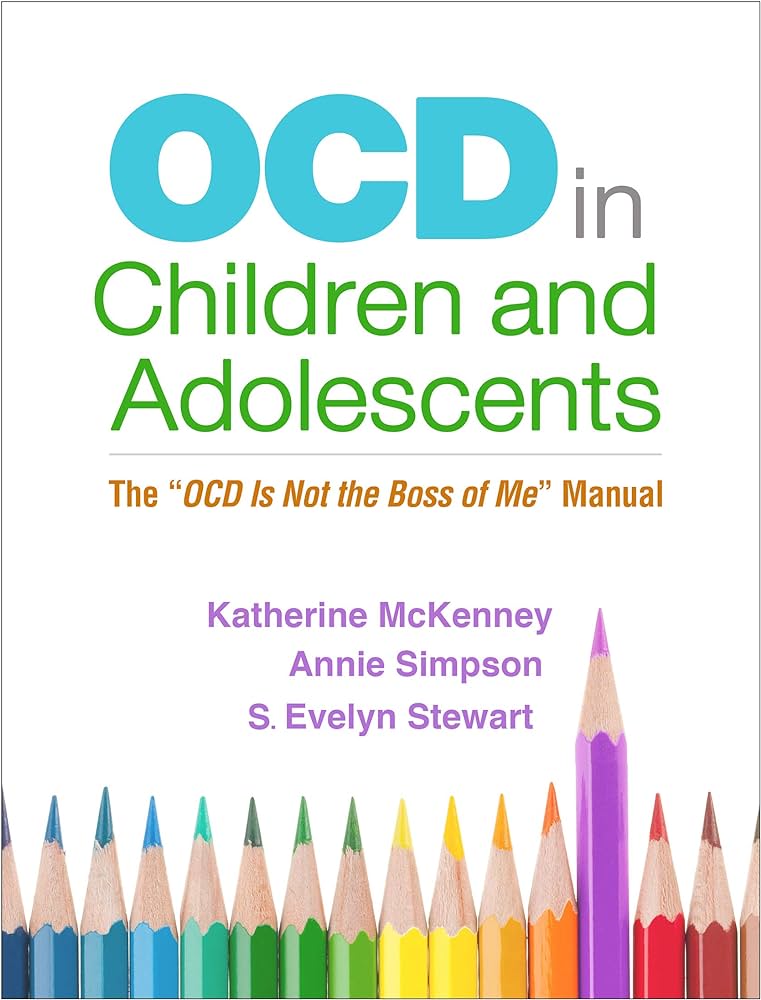OCD Diagnosis in Children-Nursing Paper Examples
Compulsive Disorder (OCD) is a mental health condition associated with obsessions and compulsions that interfere with an individual’s daily activities (Thapar et al., 2015). It begins in the early ages of 8-12 years or late teenage to adulthood. According to Westwell-Roper and Stewart (2019), children and adolescents with OCD exhibit obsessive symptoms like extreme attention to detail, obsession with dirt or germs, troubled thoughts about violence or taboo behaviors, and the urge to do everything right (OCD Diagnosis in Children-Nursing Paper Examples).
Consequently, they also experience compulsive symptoms like excess reassurance, mental reviewing, excess cleaning, doubting, hoarding, and regrouping objects into a specific order. Thus, child psychiatrists should look out for these symptoms during the diagnosis of OCD in children.

Pharmacological and Non-pharmacological Treatment of OCD in Children
Children with OCD are mostly treated with the selective serotonin reuptake inhibitors (SSRIs) class of antidepressants, such as fluoxetine and sertraline (Kotapati et al., 2019). The medications elevate serotonin levels in the brain, improving mood and reducing anxiety. Besides, child psychiatrists can also prescribe antianxiety medications like clonazepam or alprazolam in cases of severe OCD in children and adolescents. Fleming (2020) observes that the medications are initially administered for short relief before introducing the children to SSRIs (OCD Diagnosis in Children-Nursing Paper Examples).
Also, the children can be enrolled in non-pharmacological treatment processes, such as cognitive behavioral therapy (CBT). The CBT techniques include exposure and response prevention therapy (ERP) and cognitive restructuring. Reid et al. (2021) observe that ERP involves exposing the child to factors contributing to obsessive behaviors while preventing them from engaging in compulsive behaviors (OCD Diagnosis in Children-Nursing Paper Examples).
The procedure reduces temporary relief caused by compulsive behaviors, enabling them to effectively confront the anxiety and get desensitized to it. Similarly, cognitive restructuring also reduces OCD by replacing the patient’s irrational thoughts with rational ones (Van Noppen et al., 2021). Challenging irrational thoughts and thinking patterns enables children to comprehend and align their thinking patterns with positive emotional responses (OCD Diagnosis in Children-Nursing Paper Examples).
Community Resources and Referrals
Children and adolescents with OCD can get help from community resources like the Seattle Children’s Hospital. The hospital offers diagnosis, treatment, and aftercare plans for OCD in children and adolescents (Seattle Children’s Hospital, 2023). It also partners with parents to enhance the provision of individualized treatment to children. Besides, they can also get help from the International OCD Foundation, a non-profit organization providing OCD education, care, and treatment across the United States (IOCDF, 2023). It also supports research on OCD and related disorders, which improves treatment outcomes for OCD patients (OCD Diagnosis in Children-Nursing Paper Examples).
References
Fleming, L. (2020). Anxiolytic Medications (Behavioral Health). Elsevier. http://repository.phb.ac.id/755/1/Anxiolytic-Medications-Skills-Behavioral-Health-COVID-19-toolkit_280420.pdf
IOCDF (2023). About the IOCDF. International OCD Foundation. https://iocdf.org/about/
Kotapati, V. P., Khan, A. M., Dar, S., Begum, G., Bachu, R., Adnan, M., … & Ahmed, R. A. (2019). The effectiveness of selective serotonin reuptake inhibitors for the treatment of obsessive-compulsive disorder in adolescents and children: A systematic review and meta-analysis. Frontiers in Psychiatry, 10, 523. https://doi.org/10.3389/fpsyt.2019.00523
Reid, J. E., Laws, K. R., Drummond, L., Vismara, M., Grancini, B., Mpavaenda, D., & Fineberg, N. A. (2021). Cognitive behavioral therapy with exposure and response prevention in the treatment of obsessive-compulsive disorder: A systematic review and meta-analysis of randomized controlled trials. Comprehensive Psychiatry, 106, 152223. https://doi.org/10.1016/j.comppsych.2021.152223
Seattle Children’s Hospital (2023). Obsessive-compulsive disorder. https://www.seattlechildrens.org/conditions/obsessive-compulsive-disorder/
Thapar, A., Pine, D. S., Leckman, J. F., Scott, S., Snowling, M. J., & Taylor, E. A. (2015). Rutter’s Child and adolescent psychiatry (6th ed., pp. 841–857). Wiley Blackwell.
Van Noppen, B., Sassano-Higgins, S., Appasani, R., & Sapp, F. (2021). Cognitive-Behavioral Therapy for Obsessive-Compulsive Disorder: 2021 update. Focus, 19(4), 430-443. https://doi.org/10.1176/appi.focus.20210015 Westwell-Roper, C., & Stewart, S. E. (2019). Challenges in the diagnosis and treatment of pediatric obsessive–compulsive disorder. Indian Journal of Psychiatry, 61(Suppl 1), S119.https://doi.org/10.4103%2Fpsychiatry.IndianJPsychiatry_524_18
A Page will cost you $12, however, this varies with your deadline.
We have a team of expert nursing writers ready to help with your nursing assignments. They will save you time, and improve your grades.
Whatever your goals are, expect plagiarism-free works, on-time delivery, and 24/7 support from us.
Here is your 15% off to get started.
Simply:
- Place your order (Place Order)
- Click on Enter Promo Code after adding your instructions
- Insert your code – Get20
All the Best,
Cathy, CS


